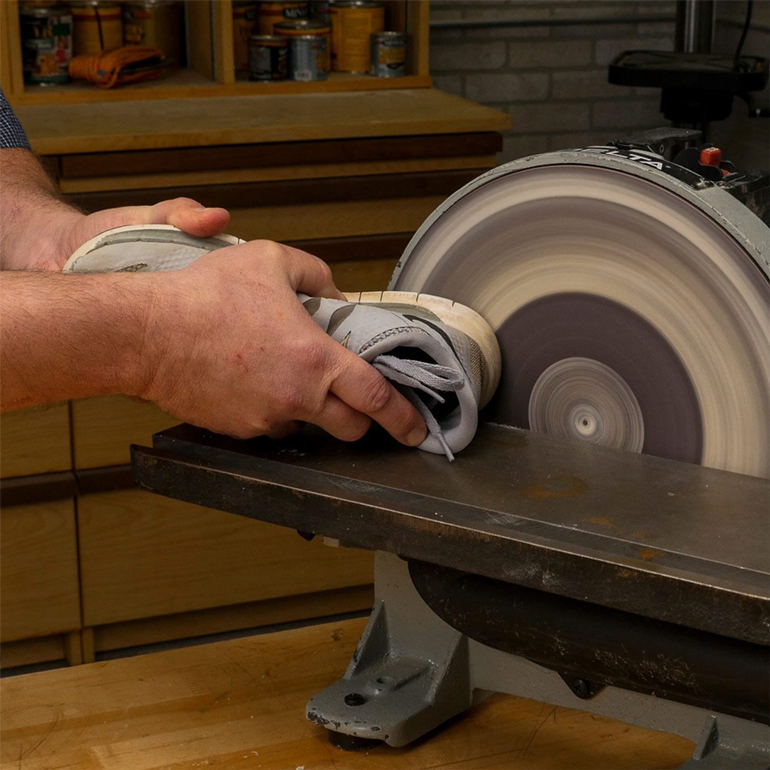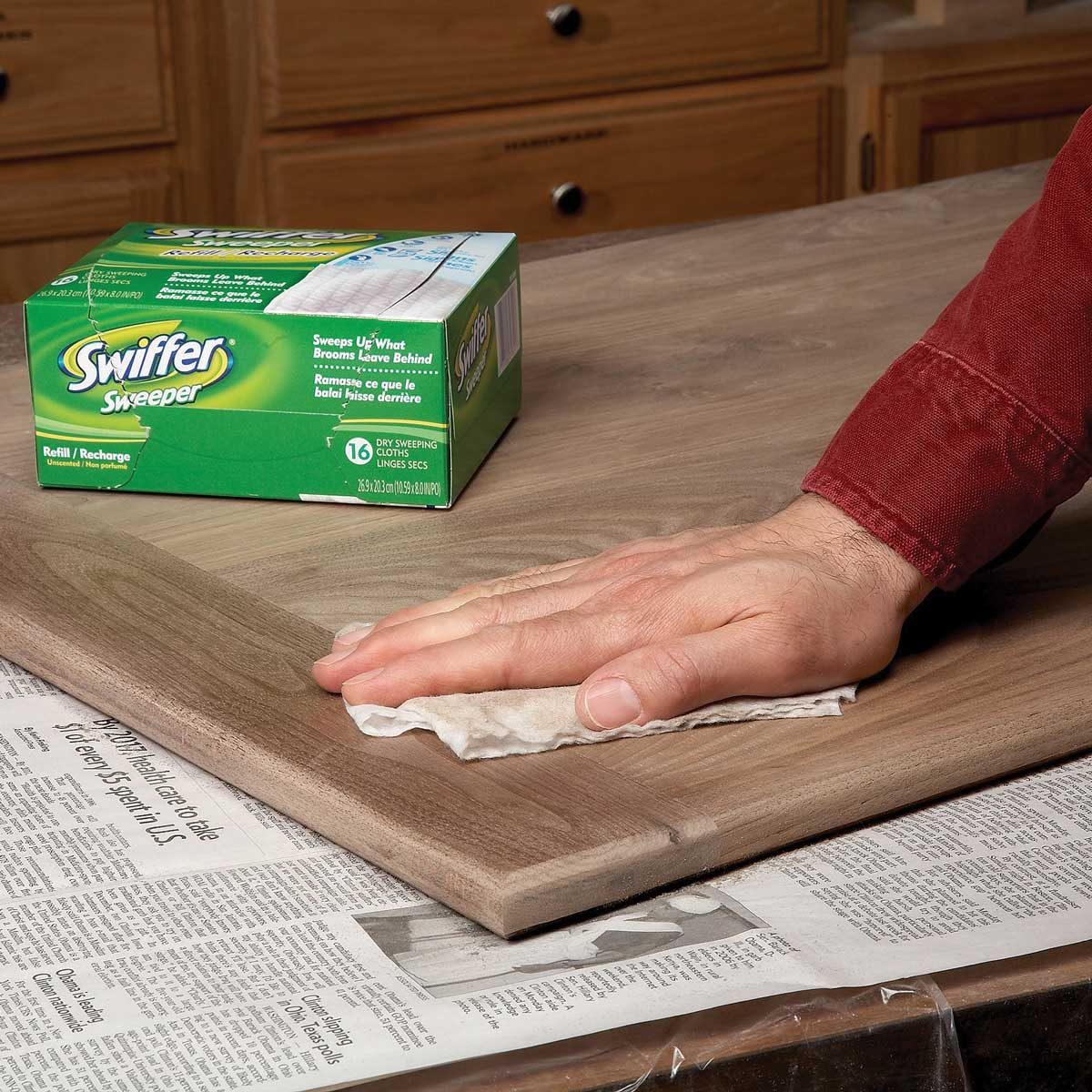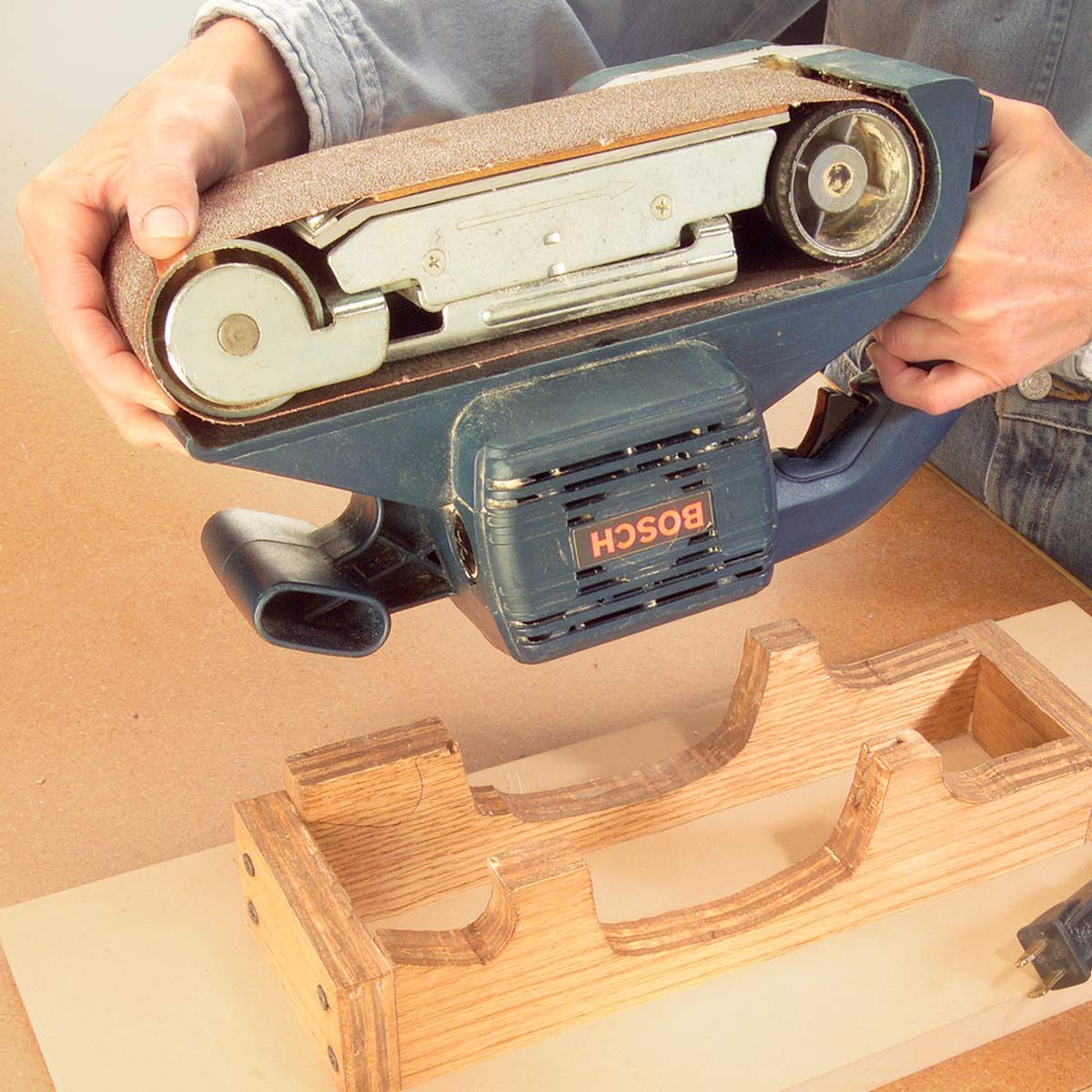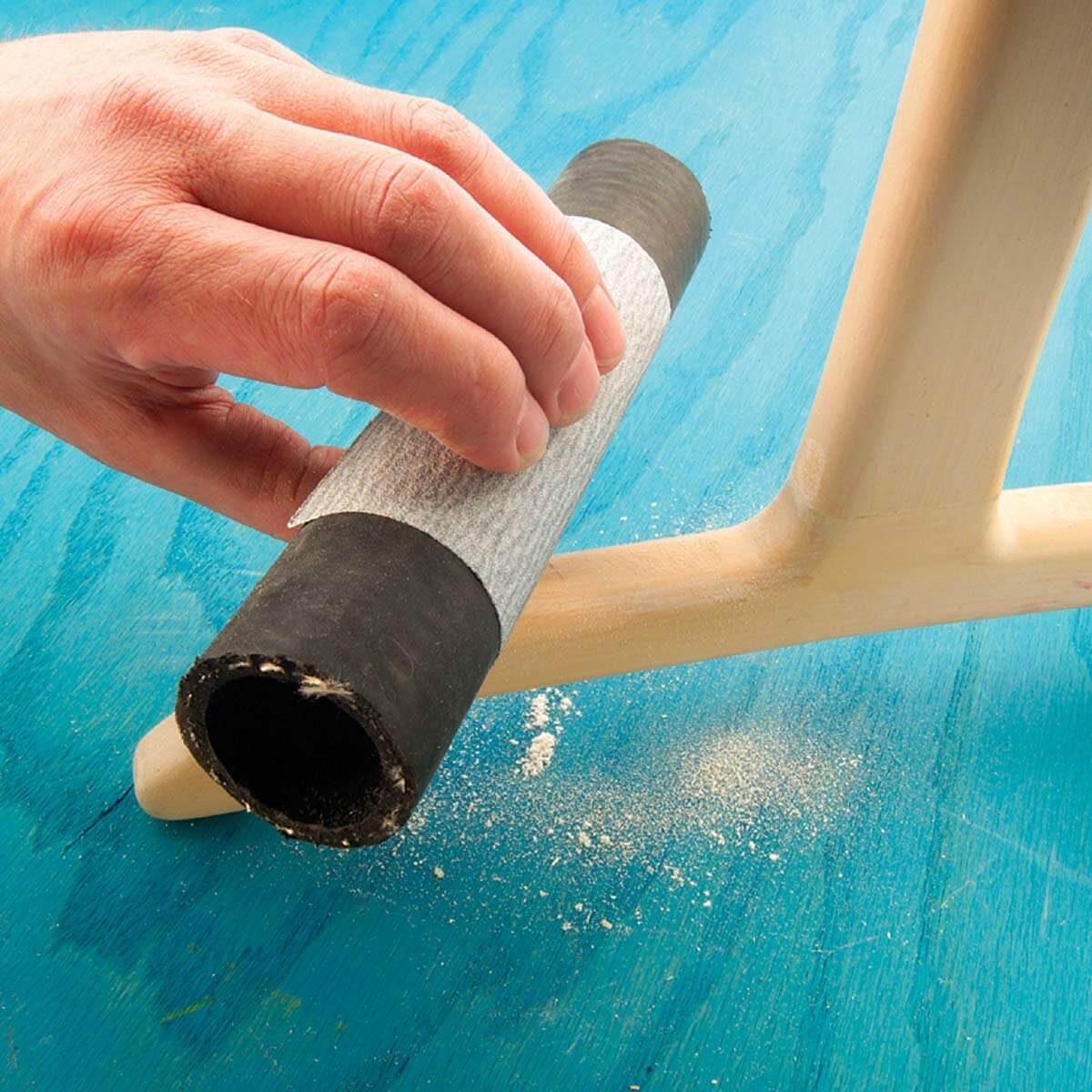Use a sneaker to clean sandpaper

Make sandpaper nearly new again with a lowly old sneaker. Start up your power sander and dust collection system (remember to wear hearing and eye protection). Then slowly press the rubber sole of an old sneaker along the sandpaper – you’ll see a difference instantly!
Dust-off softener sheets

You can see much more clearly when you’re sawing and sanding if you first rub your plastic safety glasses and face shields with a used fabric softener sheet. The exact physics is a matter of discussion, but this makes wood dust a lot less clingy. The key is to use a sheet that’s been through a drying cycle. It’ll be gentler and less laden with softener.
Quick woodworking file

This woodworking file comes in handy for sanding in tight spaces. Cut a piece of sandpaper to fit around a paint stir stick. Then use spray adhesive or an all-purpose glue to adhere it to the stick. Write the sandpaper grit on the handle of the stir stick, if you plan to store it for later use.
These are the 10 most common woodworking mistakes beginners make.








